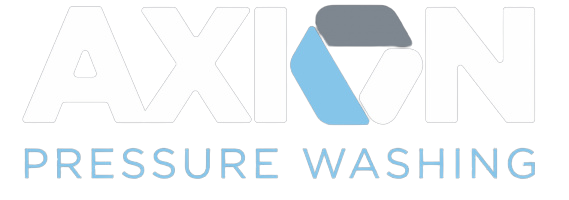If you live in Surrey or White Rock, you’ve likely noticed the common problem of lichen growth on cement roofs. While lichen can appear on many types of roofing materials, cement roofs seem particularly prone to this issue due to the region’s wet climate. Lichen is not only unsightly but can also cause long-term damage if not properly addressed. In this article, we’ll explore why cement roofs in Surrey and White Rock are especially susceptible to stubborn lichen, the best method for cleaning it, and why it can take time to completely disappear.
Why Cement Roofs in Surrey and White Rock Attract Lichen
The climate in Surrey and White Rock is characterized by frequent rain and high humidity, which creates the perfect environment for lichen to grow. Lichen thrives in moist conditions, and because cement roofs are porous, they provide an ideal surface for it to latch onto. Unlike algae or moss, which grow more superficially, lichen forms a symbiotic relationship between algae and fungi, which allows it to deeply root itself into cement surfaces. This makes it particularly difficult to remove once it has established itself.
Risks of Lichen Growth on Cement Roofs
While lichen may seem like just an aesthetic problem, it can have serious consequences for your roof over time. Lichen growth can cause:
Moisture Retention: Lichen traps moisture against your roof, which can lead to structural damage, especially during freeze-thaw cycles. The moisture can seep into the cement and cause cracks.
Surface Degradation: The fungi within lichen can slowly break down the surface of cement roofs, causing erosion and weakening the roof’s integrity.
Reduced Roof Lifespan: If left untreated, stubborn lichen can significantly reduce the lifespan of your roof, leading to costly repairs or even replacement.
Best Method for Removing Stubborn Lichen from Cement Roofs
The key to effectively removing lichen from a cement roof is using a gentle yet thorough cleaning process. While high-pressure washing might seem like an effective solution, it can cause more harm than good. Pressure washing can strip away the surface of the cement, leaving it vulnerable to more rapid deterioration.
The recommended method for safely removing lichen from cement roofs is soft washing. This process involves using low-pressure water combined with a specially formulated biodegradable cleaning solution that targets lichen and other organic growths. The cleaning solution breaks down the lichen at a molecular level, making it easier to remove without damaging the roof.
Why Lichen Takes Time to Disappear After Cleaning
One thing to understand about lichen removal is that it often doesn’t disappear immediately after the cleaning process. Even with soft washing, the lichen’s roots may remain embedded in the cement, and while the cleaning solution begins to kill the lichen, the process of complete removal can take several weeks to months.
Here’s why:
Deep Rooting: Lichen’s structure allows it to root deeply into porous surfaces like cement. While the soft washing solution kills the lichen, it needs time to penetrate and completely break down the organism.
Weather-Dependent: The full effectiveness of the cleaning solution often relies on subsequent weather conditions. Rain, wind, and sun exposure help wash away the dead lichen and promote the natural decomposition process.
Multiple Treatments: In cases of heavy lichen infestation, more than one soft washing treatment may be required to fully eradicate the problem.
Benefits of Regular Roof Maintenance
To prevent stubborn lichen growth on your cement roof, regular maintenance is key. Scheduling annual roof cleaning in Surrey or White Rock ensures that your roof remains free from organic growths like moss, algae, and lichen. By addressing the problem early, you can protect your roof from long-term damage and avoid the hassle of dealing with deeply rooted lichen in the future.
Conclusion
Cement roofs in Surrey and White Rock are particularly susceptible to stubborn lichen due to the region’s humid climate and the porous nature of the material. While lichen can be difficult to remove, the best method is soft washing—a low-pressure, eco-friendly solution that eliminates lichen without damaging the roof. However, it’s important to be patient, as lichen may take weeks or even months to fully disappear after cleaning.
For homeowners in Surrey and White Rock, regular roof cleaning is essential for maintaining the appearance and integrity of your cement roof. Don’t wait until lichen takes over—schedule a professional soft washing service today to protect your home and keep your roof in top condition for years to come.

